
There are many native trees living across the state of Colorado; I am going to focus on three individual trees: the Rocky Mountain Bristlecone pine, which grows along arid, cold ridgelines as the oldest tree in the state; the Quaking Aspen, which is common in the Rockies and resilient due in part to an interconnected root system in its colonies; and the Utah juniper, a tree that grows in hotter and drier conditions.
The Rocky Mountain Bristlecone pine is the oldest tree in Colorado, with some of the wind-swept ancient trees near South Park and Alma reaching almost 2,500 years old. It grows from around 7,000-12,000 feet in elevation. Its cousin, the Great Basin Bristlecone, has a tree in California that is the oldest tree on Earth at 5,066 years old.
Physically, the Rocky Mountain Bristlecone can vary from laying horizontally when on unprotected, windswept ridgelines, up to 40 feet in height when growing in more protected areas often surrounded by Limber pines. It can grow to around two and half feet in diameter. It can be distinguished from other pines by its glossy, green needles found in bundles of five and its small pinecones with a small bristle on the end. Both the needles and cones can have small white spots of resin on the ends of them.
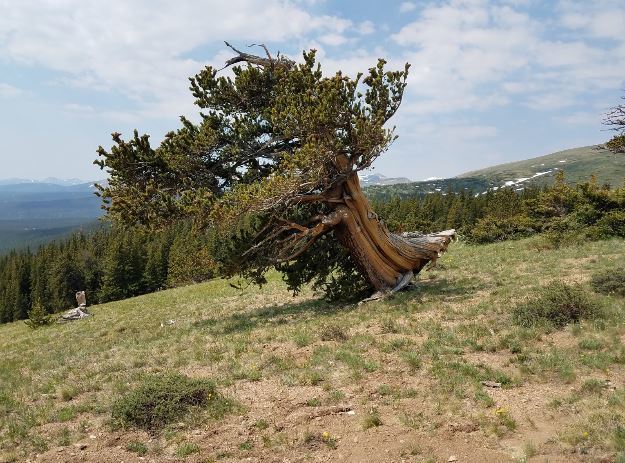
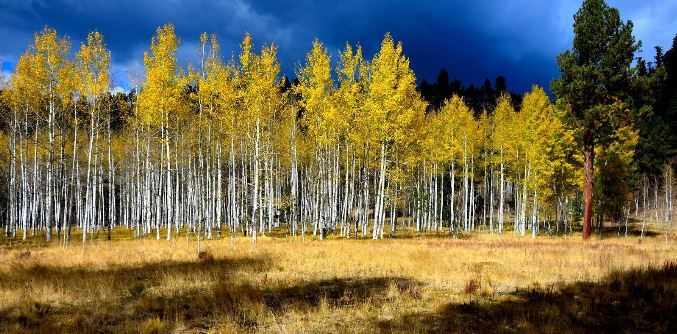
Quaking Aspen trees grows through a colony of roots that allow them to communicate and constantly grow and expand. The individual trees rarely live longer than 100 years, but the colonies can live thousands of years. The Quaking Aspen is a resilient tree and can grow in arid, dry climates, as well as moist forests, but it usually requires lots of sunlight to thrive. The aspen is well-known for its color changing leaves, which in the fall can cover a mountainside in brilliant yellow.
Aspens usually grow to a height of 20-60 feet and about 1.5 feet in diameter, but some individual trees can be twice this size. They are easily identified by their broad green leaves in the spring/summer and bright yellow leaves in the fall, with long slender white trunks that are usually scarred with black marks. Medically speaking, the aspen has a white powder on its bark that it uses as a sunscreen. When the powder is rubbed off and onto our skin, its effect works at around 5-10 SPF. The bark of the tree also has a chemical similar to aspirin and has historically been used to treat fevers.
The Utah juniper is one of three junipers in the state. It is known for growing in the more desert environments of Colorado, west of the Continental Divide, where the ground is sandier and more parched. The tree is rounded and often looks bush-like. It is typically wider than it is tall (usually 10-20 feet with a 1-2 foot diameter trunk.) This juniper can be distinguished from the other two junipers in the state, Oneseed and Rocky Mountain, by its larger berries (0.25 – 0.75 inches); its flaking strips of bark; and its more circular, stiff needles. The physically soft features of the needles are shown below.
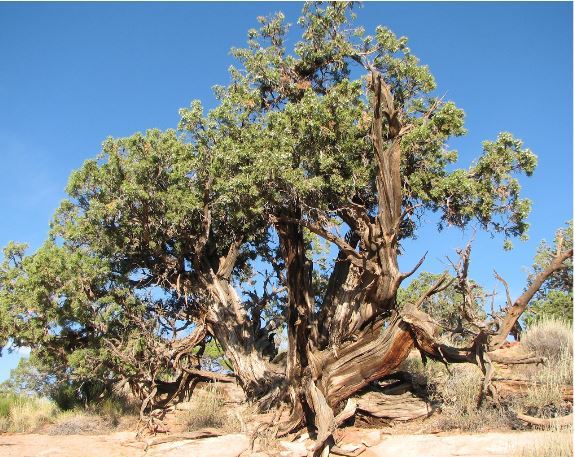
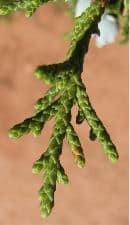
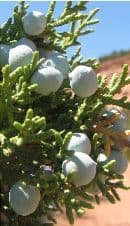

Sources:
http://www.westernexplorers.us/tree-finder-SKWier-conifer.jpg
https://plants.ces.ncsu.edu/plants/all/pinus-aristata/
http://csfs.colostate.edu/colorado-trees/colorados-major-tree-species/
http://mediad.publicbroadcasting.net/p/wglt/files/styles/x_large/public/201603/160401Grow_0.jpg
https://www.nps.gov/colm/learn/nature/images/Utah-Juniper.JPG


